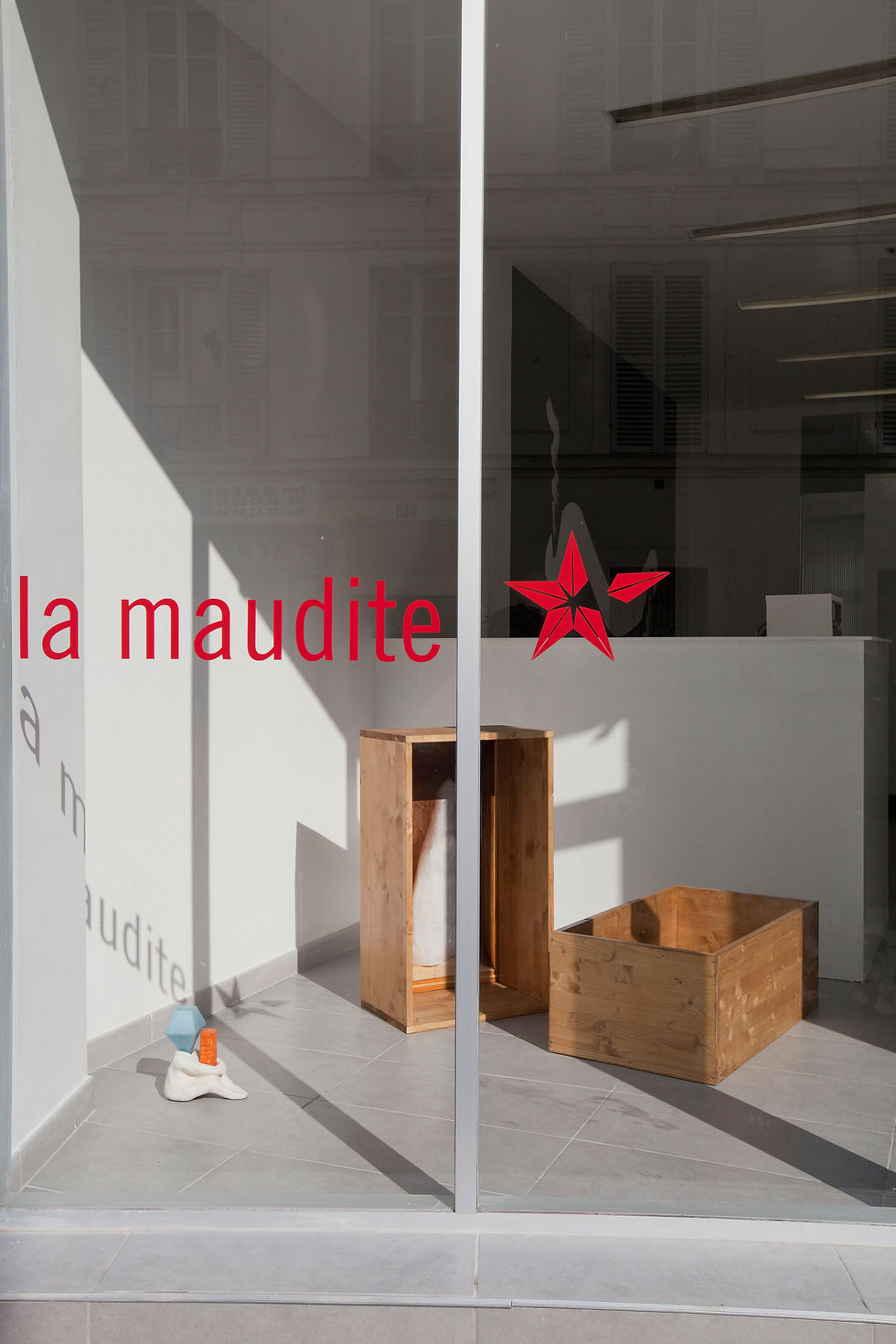1. Fantômes: An exhibition of apparitions [1.1]. Of pathways amidst apparitions [1.2]. Apparitions that aren't exactly images nor objects.
1.1. Aparições [apparitions], in Portuguese, is another term for ghosts.
1.2. Appear may be synonymous with presenting oneself, to be present, to reveal one's presence.
2. A small treatise could be written in an attempt to address the extent to which each piece is a photography or a sculpture [2.1].
2.1. This treatise would have to start with a reflexion on the difference between: i. the arts that project us to other spaces (something related to the idea of painting) and ii. the arts that emphasize their presence in the space they occupy (something related to the idea of sculpture). [2.1.1]
2.1.1. But this does not seem to be the most important. This – the mingling of genres and languages – is not the main subject of the pathways between the works.
3. There is another thing: the evocative triggers fired by each work.
Each one of them is a shape and also a puzzle. [3.1]
Each unit is a double: at once image and figure, representation and shape. And the unequal halves of these doubles denote contrasting meanings and narratives.
The eyes get confused between deep and flat, while the mind is confused among ambivalent ideas compressed into a single entity. For example:
A. From the packed object inside a box we go to the box itself, which keeps a photographic print; then to the box/coffin of an indistinct body and the ghost we remember from childhood games, and then what else?
B. From the marble veins of the sculpted hand we turn to the veins of the circulatory system and then to the channels inside the tree and afterwards to the printed graphics matching what should be inside the hand if it was a part of the human body and, therefore, to...
C. From the hazy-outlined green object we slide to the soft fabric shaped by the body and then to the two bodies united by the (green) shape and to the black object and the black body lying beside it and why does it have to end?
3.1. Puzzle, here, could be replaced by riddle, mystery, scene or skit.
4. The ambivalence of apparitions induces a sensory and cognitive ping-pong. <This can be a little funny> <This can be somewhat puzzling>
5. It is certainly a starting point. The beginning of imaginative pathways. The beginning of a story. [5.1]
5.1. Each work in this exhibition contains narratives, albeit in an embryonic state. In the gap between what each object seems to be at first sight and its many subsequent perceptions lies a certain friction that is not strictly phenomenological. It is there, in the gap between their possible apparitions, that the objects begin to tell you something. Something very open. Only the beginning of a story without a development. As the first sentence of a non-written book, on which the viewer can only speculate. [5.1.1]
5.1.1. Especular (speculate), in Portuguese, comes from espelho (mirror), reflection, bounce – hence, in the sentence, the audience/reader can get a glimpse of the outlines of a story through a mirroring of what they see before them. [5.1.1.1]
5.1.1.1. If the objects are like the opening sentences of novels, short stories or poems, then the elaborations imagined by the audience/reader are like footnotes.
6. A good text does not begin with any phrase, for it is there that one begins to gain or lose a reader. For Fantômes, Beatriz Toledo's, Eleonore False's and Timothée Dufresne's exhibition, I decided to write a non-linear pathway amidst literary apparitions: inaugural sentences of novels, short stories and poems from Latin American literature. It is an arbitrary way to create pathways between narrative fragments, as does the exhibition.
Paulo Miyada
Translation Port/En Julia Vidile
Beatriz Toledo (São Paulo, Brazil, 1979) graduated from the Escola de Comunicações e Artes at the University of São Paulo, Brazil and is currently pursuing a Masters in Contemporary Photography in Paris. She completed a residency at the ENSP in Arles and participated in several exhibitions in São Paulo and Paris. In 2011, she organized the exhibition Humble, silentieux et inexplicable at Galeria Virgilio/SP. Recently she was selected for a residence at the Red Bull Station/SP. She co-directs the art space La Maudite.
Éléonore False (Paris, 1987) graduated from the Ecole Nationale Superieure des Beaux-Arts in Paris (2013) and from the ENSAAMA Olivier de Serres (2008). In 2012, she spent several months at the Fundação Armando Alvarez Penteado in São Paulo, Brazil. She has participated in several exhibitions in France and in Brazil. Recently she was a resident at Triangle France, Marseille, and her work was presented at the Petirama of the Friche Belle de Mai, in April 2014.
Timothée Dufresne (Paris, 1988) graduated from the ENSAMAA Olivier de Serres in textile design in 2008 and from the ENSBA in 2013. In 2012 he went to Rio de Janeiro to study the Brazilian Neoconcretism. He took part in several group exhibitions since 2009: Choices at the belvedere of the Palais des Beaux-Arts, Come and play inside at the Perception Park gallery, Call me at the 68 bis rue de Turenne and Crosswords with the RECIT publishing house in 2014. He presented a solo exhibition at the MIE Bastille.
Paulo Miyada (São Paulo, Brazil, 1985) holds a Master in Architecture and Urban Planning at the FAU-USP. He was a deputy curator of the 29th São Paulo Art Biennial and a member of Rumos Artes Visuais 2011-13. Currently he coordinates the research and preservation center Tomie Ohtake Institute and he was a curator at the Singularidades/Anotações exhibition at Itaú Cultural, São Paulo. In parallel, he has been carrying experimental publications and exhibitions projects for several years.




















Beatriz Toledo, Éléonore False et Timothée Dufresne
Fantômes
opening 25.09.14
25.09.14 - 31.10.14